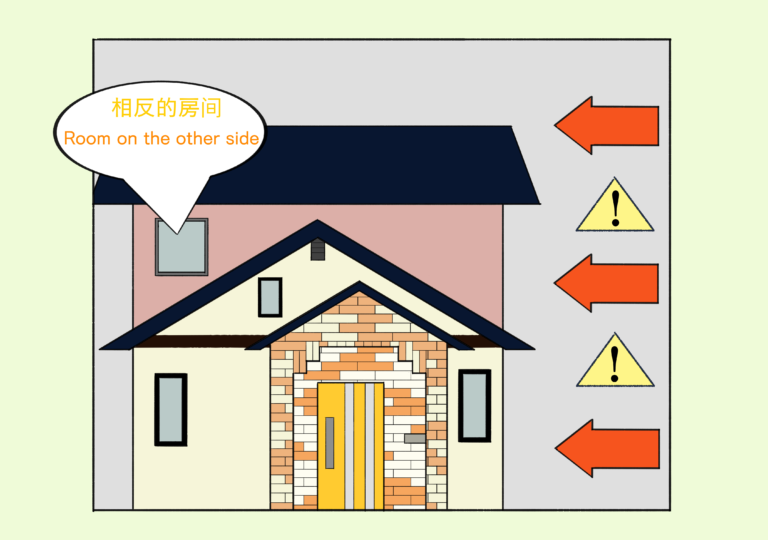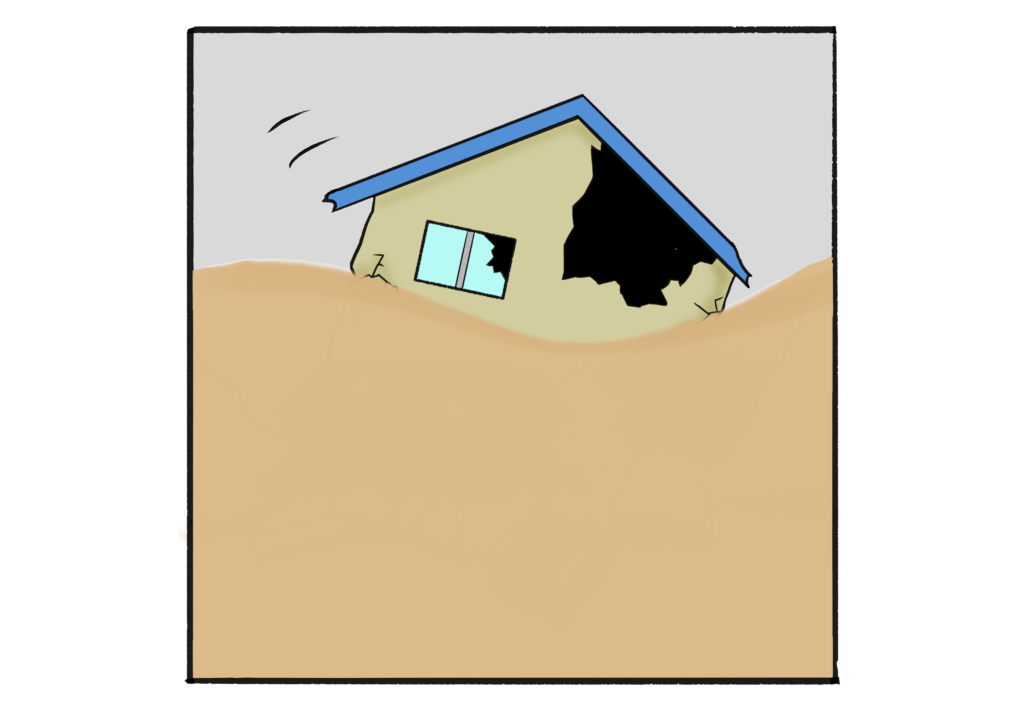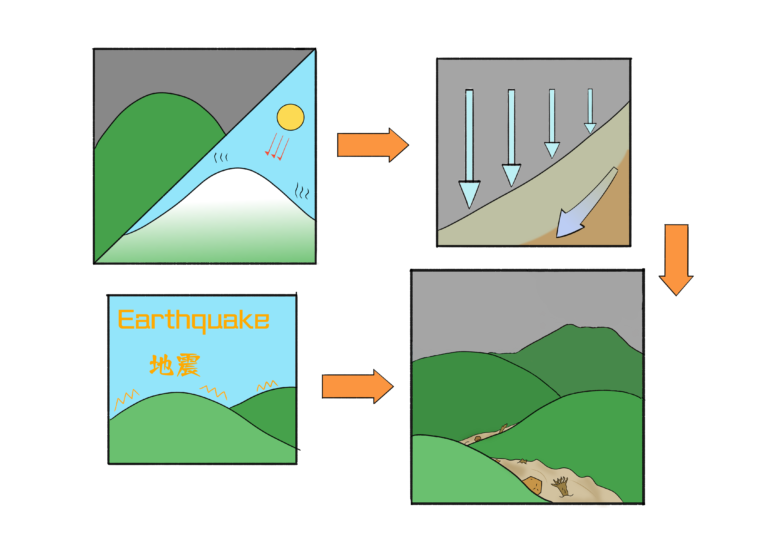
• Please check the situation near your home in advance to make sure there is no danger of landslides or there is a plan for escaping the possible disaster.
• Should you find any precursors such as the cracking of the ground, the sound of falling trees, falling rocks, etc. please evacuate to a safe place as soon as possible.
• If you are at home go to a room above the second floor and opposite to the slope of the mountain.
• Follow the information on disaster prevention, forecast and other information in a timely manner.


